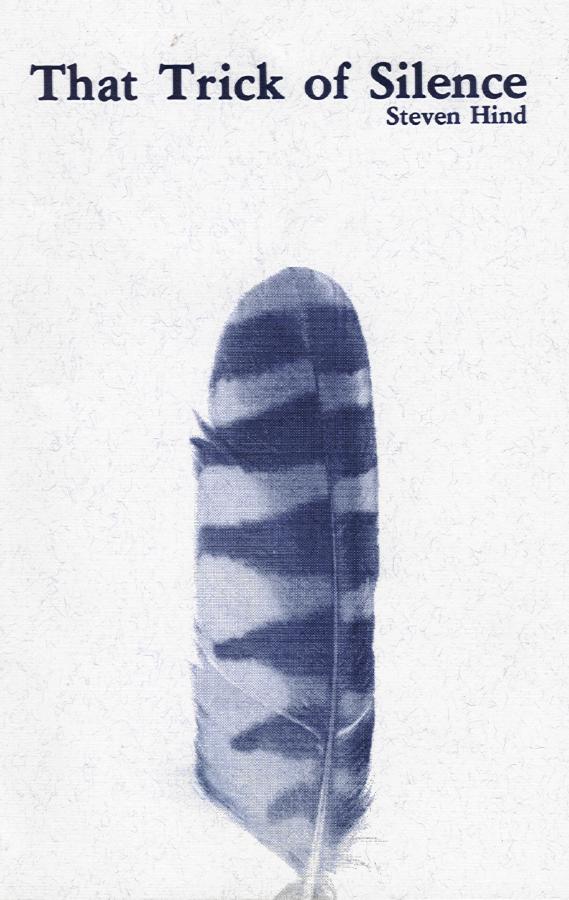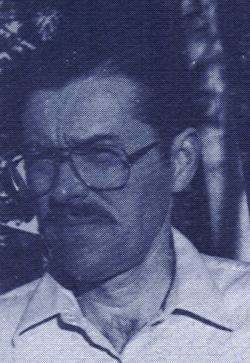whose book of poetry, In a Place With No Map: New and Selected Poems,
was co-published in 1997 by The Woodley Press
and the Washburn University Center for Kansas Studies.
 ____
____ ____
____
Photo by Emily Hind
 ____
____ ____
____
Photo by Emily Hind
This commentary on Steven Hind's work was written by a friend and colleague at Hutchinson Community College, William Sheldon, who is also a member of the Board of the Woodley Press, and soon to have his own book of poetry published.
Steven Hind was born in 1943,
and raised on a farm near Madison, Kansas. He received a B.A. and
M.S.E. in English from Emporia State University and an M.A. in English
from the University of Kansas. He lives and writes in Hutchinson,
Kansas, where he has taught for 31 years at Hutchinson Community College.
His three books of poetry--Familiar Ground, That Trick
of Silence, and In a Place With No Map: New and Selected
Poems--focus on the Flint Hills region of his home state.
Ian Frazier, author of Great Plains, writes that Hind's poetry
includes "some of the best descriptions of the plains I've ever read."
Hindís third book--In
a Place With No Map--is a refinement of his vision of the Kansas
grasslands laid out in his first two collections, and a number of the poems
have wound their way through all three. There is a Whitmanesque quality
to this sort of revision. However, where Whitman is expansive, Hindís
process seems one of ruthless paring, producing a book shorter than its
predecessors. We can sense in this Hindís taking seriously the notion
of ďselected poems,Ē narrowing the work to a point where one listening
closely begins to ďhear the grass / speaking through the thorny windĒ as
Hind writes in ďAt Home in a Word.Ē Hindís poems speak of the wind,
the grass, and the peoples of this place--past and present, human and otherwise.
And if we pay attention, they teach us to listen, perhaps to hear those
voices on our own.
A deceptive benefit of Hindís
work is its initial accessibility. Like the grasslands he writes
about, much of the life in Hindís poetry occurs beneath the surface recognition
of the familiar. Still, it is the recognizable which first draws
the reader in, encountering abandoned houses, oil pumps, our particular
people and wildlife, and of course the grass. For readers familiar
with these things only as part of a long drive-by from Kansas City to Denver,
the second look Hind provides can lead to discovery. For those more
familiar with Hindís world and work, there is often the deeper recognition
of someone saying for them that which they wanted, but were unable, to
say.
Perhaps Hindís greatest
gift--to us--is his re-seeing of our state. A native of ďThe Great
American Desert,Ē he has long been aware of the common perception of this
place, described in the title poem of That Trick of Silence
as:
Hindís poetry undercuts such easy perceptions of geography and occasionally provides almost Emersonian direction for re-seeing our place. In Hindís mapping of his place, there are moments where, once we divorce ourselves from tired preconception, the place blossoms, real, genuine for us. It is a sensibility seen in the title of his most recent collection.This slab of land, never
So much anything in the public
Mind as a place to get behind you.
That seems to me a good ending.. . . if there
is a life after this one, I will
come back here to stay
as long as the grass stays.
William Sheldon
October 23, 2001
For more information on In a Place With No Map (as well as ordering information) see The Woodley Press web site.